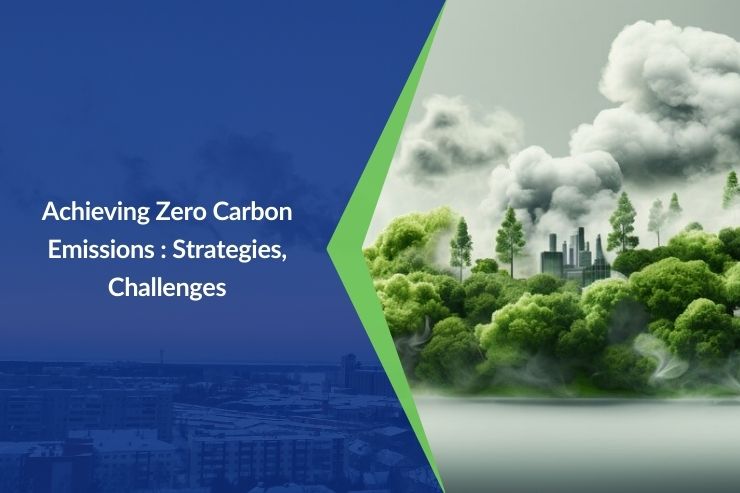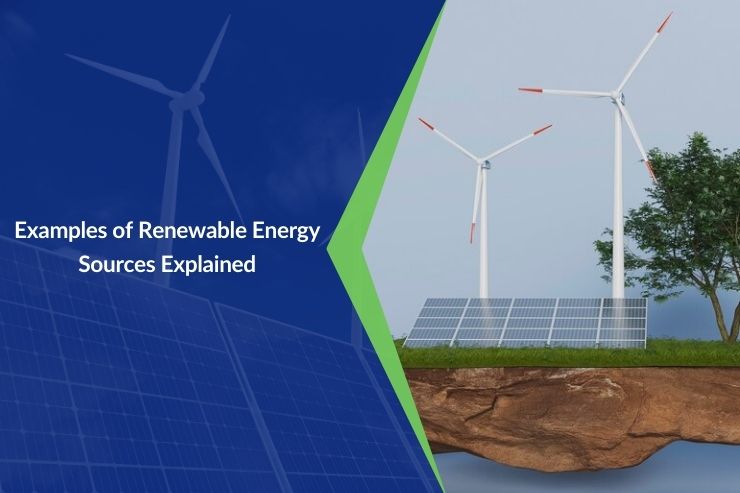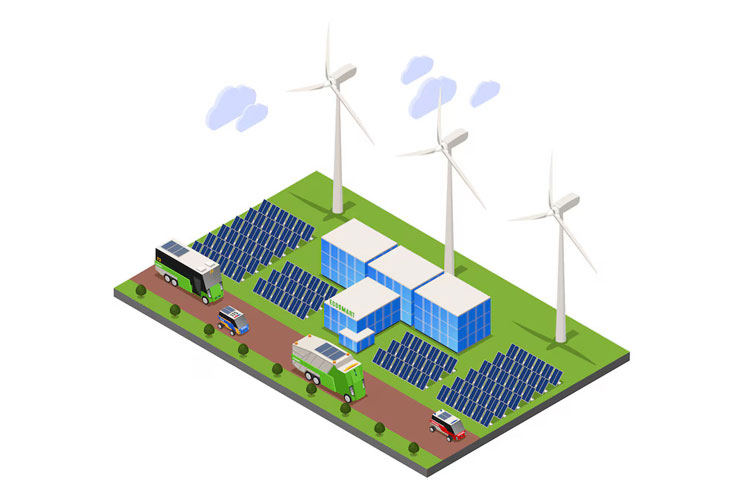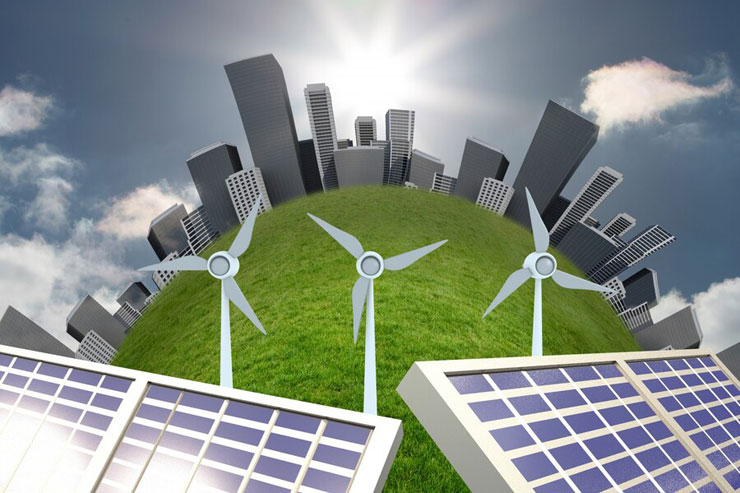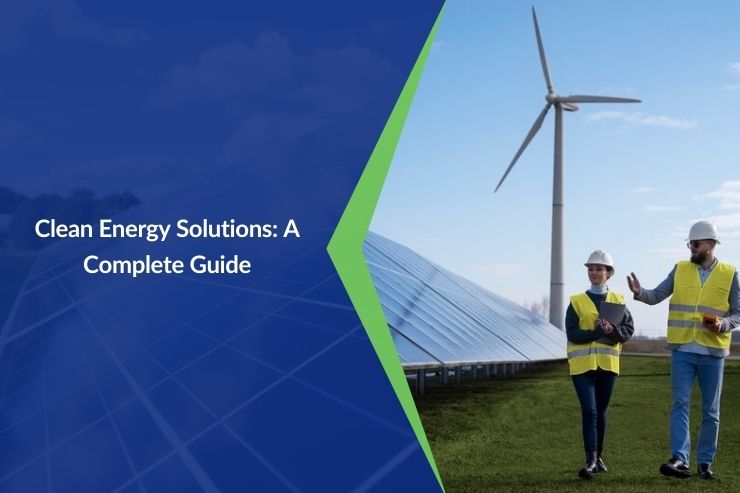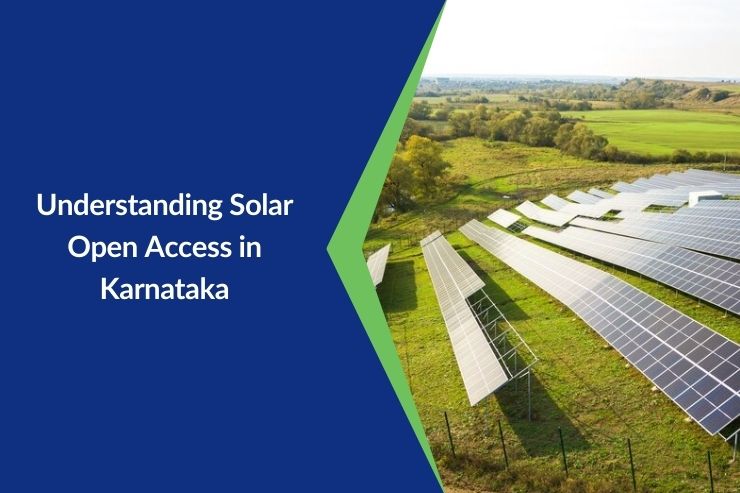What is Zero Carbon Emissions?
Zero carbon emissions refer to a situation in which there are no carbon dioxide emissions generated from any source throughout the world. Reaching this goal means that all greenhouse gas emissions should be eliminated, an important move for fighting climate change and preserving the atmosphere. This blog will discuss the strategies, obstacles and future prospects of zero-carbon emissions globally.
Why Zero Carbon Emissions Matter?
So, zero carbon emissions are important in combating climate change. The environmental impacts of carbon emissions are widespread, affecting global temperatures, weather patterns, biodiversity and water resources. By cutting out carbon emissions we do not only help stabilise the climate but also postpone a catastrophic degradation of our natural world.
Climate Change and Zero Carbon Emissions
Zero carbon emissions are a key step in slowing down the quick progression of climate change. We can significantly curtail global warming by stopping the release of greenhouse gases, mainly carbon dioxide. This is important for maintaining sea levels, preserving marine and terrestrial biodiversity, and assuring the sustenance of human populations in vulnerable regions.
Economic Implications
The shift toward zero carbon emissions also presents considerable economic benefits. For one, it catalyses the growth of new industries and technologies, leading to job creation in the renewable energy sector. Furthermore, zero-carbon initiatives often result in energy savings and operational efficiencies, which can reduce long-term costs for businesses and governments to a large extent. This economic rationale provides a compelling case for nations and corporations alike to invest in the transition to a carbon-neutral economy.
Strategies to Achieve Zero Carbon Emissions
The roadmap to zero carbon emissions involves comprehensive strategies that integrate technology, policy, and individual actions. Achieving this ambitious goal requires global cooperation and innovation.
Renewable Energy Sources
Making the shift towards using renewable energy sources is an effective method to achieve carbon neutrality. Mainly, solar and wind energy have emerged as key elements of sustainable energy strategies around the world since they do not produce a significant amount of hazardous pollutants and can be regenerated naturally. Using these resources will allow us to lessen our dependency on fossil fuels, which primarily contribute to global warming through the emission of different gases like carbon dioxide, amongst others. Additionally, expanding renewable energy infrastructure assists in combating climate change while providing nations with better assurance of their power situation and less foreign control over it.
Energy Efficiency Improvements
Improving energy efficiency across various sectors—buildings, transportation, and industry—is very important for reducing carbon footprints. Initiatives such as better insulation in buildings, more fuel-efficient vehicles, and energy-saving industrial processes play a significant role in decreasing overall energy consumption. These improvements not only contribute to sustainable development but also offer significant economic benefits through cost savings.
Carbon Capture and Storage (CCS)
Carbon Capture and Storage (CCS) technology is key in the fight against climate change, especially in industries where emissions are difficult to eliminate. CCS involves capturing carbon dioxide from emission points and transporting it to a storage site where it is sequestered underground. This technology is important for addressing emissions from sectors like cement and steel production, which are harder to decarbonize.
Policy and Legislation
Robust government policies are critical to support the shift toward zero carbon emissions. Legislation that incentivizes the adoption of renewable energy imposes strict emissions standards, and provides funding for research and development in green technologies is essential for promoting an environment that helps in the energy transition. Effective policy frameworks can accelerate the adoption of zero-emission technologies and ensure that economic and social systems align with sustainability goals.
Challenges in Achieving Zero Carbon Emissions
While the benefits of zero carbon emissions are clear, several challenges impede progress in this area. Some of them are mentioned below.
Technological Challenges
One of the main obstacles to achieving zero carbon emissions is the current technological limitations. While advancements in green technology are quickly evolving, many solutions, especially in Carbon Capture and Storage (CCS) and renewable energy storage, are not yet efficient or cost-effective enough for widespread adoption. This gap restrains the ability to fully transition to a zero-emission future.
Economic and Financial Barriers
The economic and financial barriers associated with transitioning to zero carbon are huge. The initial costs of shifting to renewable energy sources and infrastructure to be more energy-efficient can be massive for many businesses and governments. These expenses make it challenging to justify the short-term investment, even after knowing the long-term savings and environmental benefits.
Social and Political Resistance
Social and political resistance also poses significant challenges. Public perception can often be sceptical of the immediate benefits of moving to zero carbon solutions, mainly if there are upfront costs or disruptions to current lifestyles. Politically, there may be resistance due to the influence of traditional energy sectors and the complex global nature of legislating environmental policies, which can slow down the adoption of necessary measures to reduce emissions.
What is the Future of Zero Carbon Emissions?
Looking ahead, the pursuit of zero carbon emissions is both necessary and inevitable, promising a sustainable future for all.
Role of Emerging Technologies
Emerging technologies like Artificial Intelligence (AI), the Internet of Things (IoT), and advanced materials science are playing transformative roles in reducing carbon emissions. AI and IoT offer predictive insights and optimal control of energy use across various sectors, making processes more efficient and less carbon-intensive. Additionally, advancements in materials science are enabling the creation of more effective photovoltaic cells and wind turbines, increasing the capacity and efficiency of renewable energy sources.
Public Engagement and Awareness
The importance of public engagement and awareness cannot be overstated in the journey toward zero carbon emissions. Achieving these goals requires broad societal support, which is promoted through education, transparent communication, and inclusive policy-making. By increasing the public’s understanding of the benefits of a zero-emission future and involving them in the transition process, it is possible to adopt sustainable practices and technologies faster.
Conclusion
No matter how complex it may seem, achieving zero carbon emissions is a matter of life and death for the world’s health and prosperity. To this end, it calls for synergistic actions along the technological, political and community lines aimed at creating an ecologically sustainable, carbon-neutral world.
Frequently Asked Questions
What is the Difference Between Zero Carbon Emissions and Carbon Neutrality?
Zero carbon indicates no emission being produced, while carbon neutrality means that emissions produced are equivalent to the amount of removal.
How can Businesses Achieve Zero Carbon Emissions?
Businesses can switch to renewable energy, invest in energy efficiency, and leverage carbon capture technologies.
What Role does Renewable Energy Play in Achieving Zero Carbon Emissions?
By replacing fossil fuels with renewable energy sources, you can reduce the total amount of carbon emissions emitted.
Why are Zero Carbon Emissions Important for the Environment?
They prevent further climate change and reduce global warming.
What are Some Challenges in Achieving Zero Carbon Emissions?
Challenges include technological limits, high costs, and lack of public and political support.
How can Individuals Contribute to Zero Carbon Emissions?
Individuals can contribute to zero carbon emissions by decreasing their power consumption rate/energy bill, purchasing environmentally friendly goods or participating in eco-friendly initiatives.

